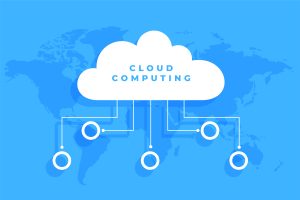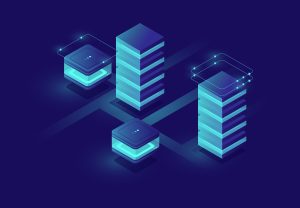In 2024, software development continues to evolve rapidly, driven by new technologies, frameworks, and tools that empower developers to create more efficient, scalable, and user-friendly applications. Choosing the right tech stack is crucial for any development project, as it determines the foundation of your software, influencing its performance, scalability, and maintenance.
In this blog, we’ll explore the top 10 tech stacks for software development in 2024, highlighting the best programming stacks, popular frameworks, and the latest tools developers gravitate towards.
What is Technology Stack?
A technology stack (often referred to as a tech stack) is a combination of programming languages, frameworks, libraries, tools, and technologies used to build and run software applications. It consists of two main components:
- Front-End (Client-Side): This includes everything the user interacts with directly. It typically involves HTML, CSS, and JavaScript, along with frameworks like React, Angular, or Vue.js.
- Back-End (Server-Side): This part handles the application’s logic, database interactions, authentication, and server configuration. It includes programming languages like Python, Java, Ruby, or PHP, along with frameworks like Django, Ruby on Rails, or ASP.NET. The back-end also involves databases (e.g., MySQL, PostgreSQL, MongoDB) and server management tools.
Some technology stacks also include a database layer for managing data and a DevOps layer for continuous integration and deployment.
Here are the top tech stacks for Software Development for 2024, each offering unique strengths and capabilities to help developers build high-performance software applications:
MERN Stack (MongoDB, Express.js, React, Node.js)

The MERN stack has remained one of the popular tech stacks in 2024 due to its simplicity and flexibility in building full-stack JavaScript applications. It consists of:
- MongoDB: A NoSQL database that stores data in a JSON-like format.
- Express.js: A lightweight framework for building web applications in Node.js.
- React: React is a powerful front-end library developed by Facebook for building user interfaces.
- Node.js: A server-side runtime environment that enables JavaScript to run on the server.
Example: Many startups and enterprises use the MERN stack to create dynamic Single-Page Applications (SPAs) and real-time web applications.
MEAN Stack (MongoDB, Express.js, Angular, Node.js)

Like the MERN stack, the MEAN stack replaces React with Angular, a TypeScript-based framework developed by Google. This tech stack is ideal for building complex, large-scale applications that require robust structure and scalability.
Example: Enterprises often use the MEAN stack to develop enterprise-level applications that require high performance and maintainability.
LAMP Stack (Linux, Apache, MySQL, PHP/Python/Perl)

The LAMP stack has been a staple in web development for years and continues to be a trending tech stack for developers in 2024. It includes:
- Linux: An open-source operating system.
- Apache: A widely-used web server software.
- MySQL: A relational database management system.
- PHP/Python/Perl: Server-side scripting languages.
Example: LAMP is a go-to choice for developers building traditional web applications, particularly on Linux servers.
JAMstack (JavaScript, APIs, Markup)

The JAMstack is an architecture designed to make the web faster, more secure, and easier to scale. It decouples the front end from the back end, allowing developers to use static site generators, JavaScript frameworks, and APIs to deliver dynamic content.
Example: Companies like Netlify and Gatsby champion the JAMstack for building modern, high-performance websites and applications.
Serverless Stack (AWS Lambda, Azure Functions, Google Cloud Functions)

The Serverless Stack represents the future of cloud computing, where developers can build and run applications without managing servers. Instead, they focus on writing code while the cloud provider handles the infrastructure.
Example: Businesses use serverless technology to create scalable microservices and event-driven architectures, reducing operational overhead.
Flutter with Firebase

Flutter, a UI toolkit by Google, combined with Firebase, a comprehensive app development platform, is a tech stack for modern software development in 2024. Flutter allows developers to build natively compiled applications for mobile, web, and desktop from a single codebase. At the same time, Firebase provides a suite of tools like authentication, real-time databases, and hosting.
Example: Cross-platform apps like Google Ads and Alibaba are built using Flutter and Firebase, showcasing the power and versatility of this stack.
Ruby on Rails (Rails)

Ruby on Rails, or simply Rails, continues to be the best programming stack for 2024 due to its convention over configuration approach, making it easy to develop database-backed web applications. Ruby, the programming language, is known for its simplicity and elegance.
Example: Popular platforms like Shopify and GitHub are built using Ruby on Rails, highlighting their robustness and scalability for web development.
Django Stack (Django, Python, PostgreSQL)

Django, a high-level Python web framework, is paired with PostgreSQL, an open-source relational database, to create a technology stack for software engineers focusing on rapid development and clean, pragmatic design.
Example: Django is favored by developers building secure, scalable web applications, with notable examples including Instagram and Pinterest.
Spring Boot with Kotlin

Spring Boot, an extension of the Spring framework, combined with Kotlin, a modern programming language, is an innovative tech stack for 2024. This stack is popular among Java developers looking to build microservices and enterprise-grade applications with less boilerplate code.
Example: Many financial institutions and e-commerce platforms use Spring Boot with Kotlin to develop robust and scalable backend systems.
ASP.NET Core with Blazor

ASP.NET Core, a cross-platform framework developed by Microsoft, paired with Blazor, a web framework that allows you to build interactive web UIs using C#, is one of the top frameworks and libraries 2024 offers. This stack is perfect for developers who prefer C# over JavaScript for both client-side and server-side development.
Example: Enterprises use ASP.NET Core with Blazor to create modern, high-performance web applications that are easy to maintain and extend.
Final Thoughts
The world of software development is full of exciting possibilities. With so many powerful tech stacks for software development to choose from, developers have the freedom to build innovative and efficient software that truly stands out. Whether you’re launching a startup or upgrading an enterprise-level system, picking the right tech stack can make all the difference.






